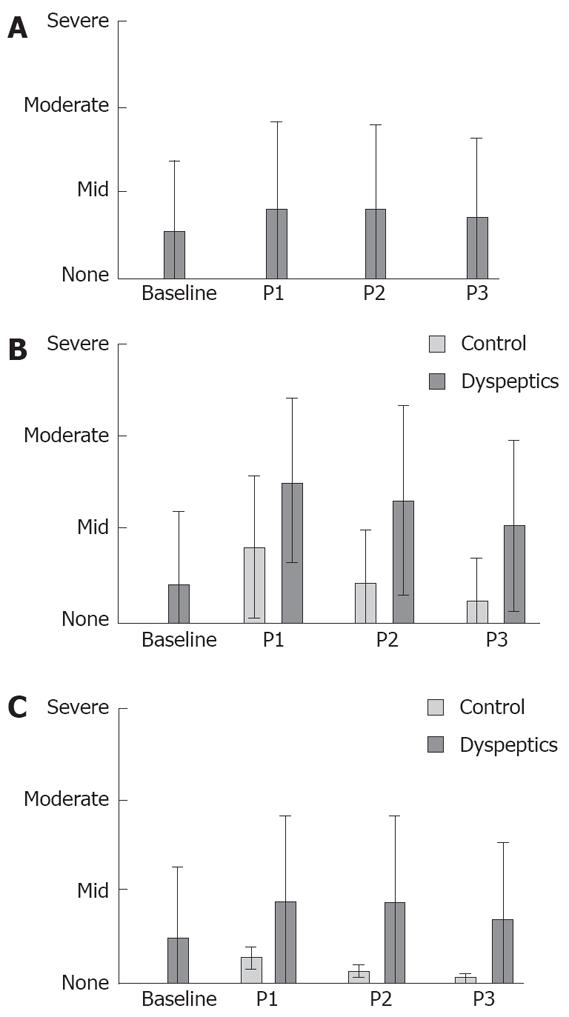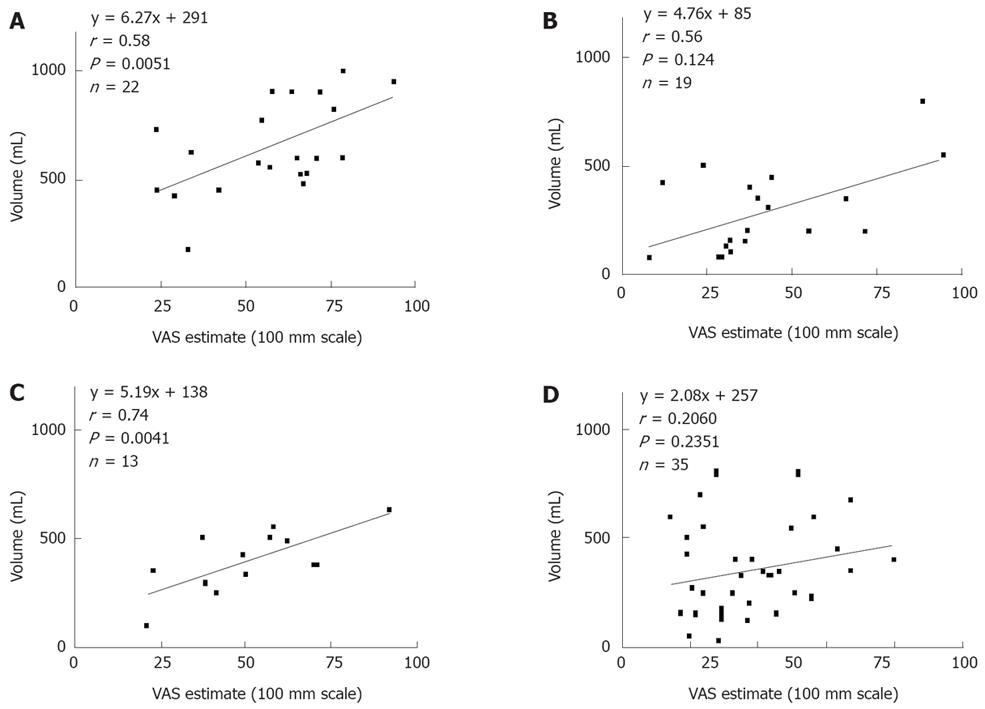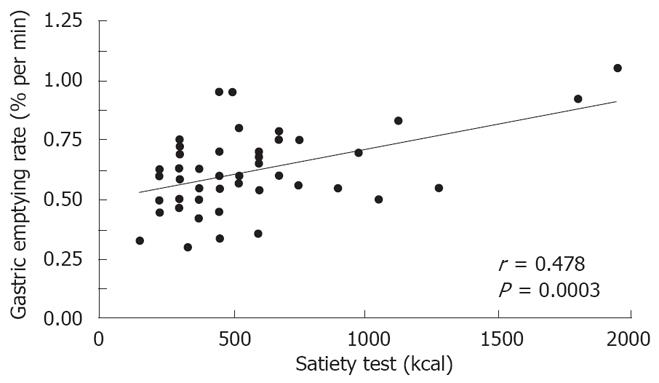Copyright
©2008 The WJG Press and Baishideng.
World J Gastroenterol. Sep 21, 2008; 14(35): 5371-5376
Published online Sep 21, 2008. doi: 10.3748/wjg.14.5371
Published online Sep 21, 2008. doi: 10.3748/wjg.14.5371
Figure 1 Symptoms before and after a 5-min water load test in controls and patients with functional dyspepsia.
Patients with dyspepsia were significantly more symptomatic in terms of nausea (A), fullness (B), and bloating (C) both at baseline and after the water load test. Symptom scores at all time points were significantly different between the two groups. P1: 10 min after WL5; P2: 20 min after WL5; P3: 30 min after WL5. Data are expressed as mean ± SD. Adapted from Jones et al[2].
Figure 2 Drink test self-efficacy.
Controls (A), and patients with either gastroparesis (B) or gastroesophageal reflux disease (C) are able to accurately estimate drinking capacity, while patients with functional dyspeptics (D) cannot. VAS: Visual analog scale. Adapted from Jones et al[2].
Figure 3 Volumes measured by gastric volume scintigraphy for total, proximal and distal stomach volume over time.
Patients with functional dyspepsia had higher fasting volumes but reduced maximal tolerated volumes during drink test and reduced lower distal stomach volumes (aP < 0.05, bP < 0.01, dP < 0.001; Mann-Whitney U-test). Adapted from van der Elzen et al[10]. HV: Healthy volumes; FD: Functional dyspepsia.
Figure 4 Correlation between nutrient drink test (kcal) and gastric emptying rate (% per min of gastric content) in the dyspeptic patients.
Adapted from Cuomo et al[11].
- Citation: Jones MP. Satiety testing: Ready for the clinic? World J Gastroenterol 2008; 14(35): 5371-5376
- URL: https://www.wjgnet.com/1007-9327/full/v14/i35/5371.htm
- DOI: https://dx.doi.org/10.3748/wjg.14.5371
















